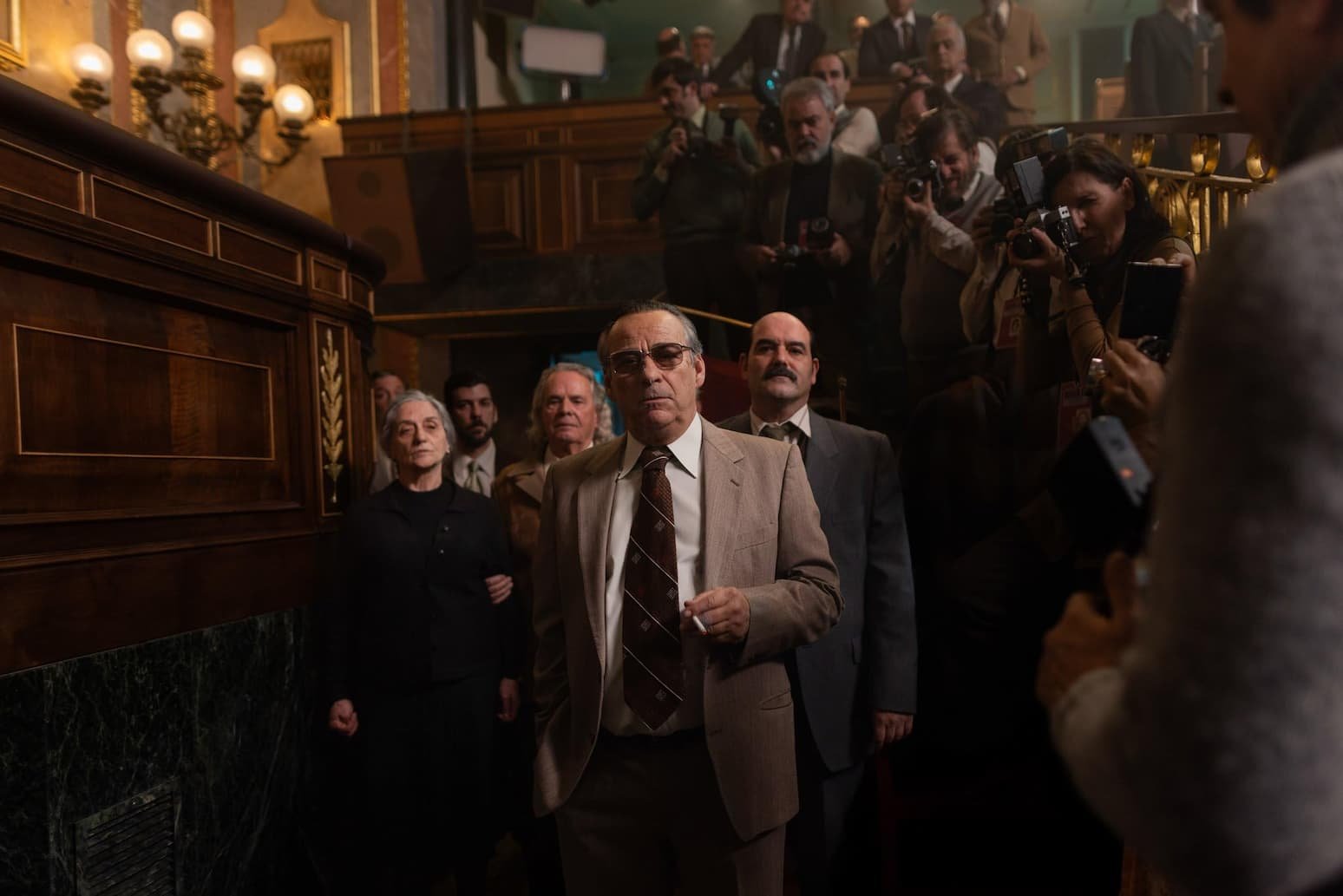The Anatomy of a Moment (Spanish: Anatomía de un instante) is an upcoming Spanish historical drama based on the bestselling book by Javier Cercas. The limited series is produced by Movistar Plus+ in collaboration with DLO Producciones and ARTE France and is set to premiere in late 2025.
This gripping political series revisits the real-life events of Spain’s attempted military coup in 1981. It centers on three key political figures—Adolfo Suárez, Santiago Carrillo and Manuel Gutiérrez Mellado—who made a powerful statement by refusing to take cover when shots were fired inside Spain’s parliament.
In this guide by NetFilming, we take a closer look at all the major filming locations used in the production, along with some valuable behind-the-scenes facts.
What Is The Anatomy of a Moment About?
José Manuel Lorenzo made this short series based on Javier Cercas’ well-known book Anatomía de un instante. It is about the dramatic coup attempt on February 23, 1981, which was a stressful time for Spain as it moved from Franco’s dictatorship to democracy. Adolfo Suárez, Santiago Carrillo and Manuel Gutiérrez Mellado are the three main political characters in the show. They are performed by Álvaro Morte, Eduard Fernández, and Manolo Solo. The first three episodes look at what they did before the coup, and the last episode is on the trial of those who were participating. Movistar Plus+ and DLO Producciones made the series, with ARTE France as a partner. It promises to be a fascinating portrayal of this important moment in history.
Where Was The Anatomy of a Moment Filmed?
To make the series feel as real as possible, the production team filmed in authentic locations across Spain. These carefully chosen spots help recreate the atmosphere of early 1980s Spain. Here’s a look at the main filming locations:

Congreso de los Diputados, Madrid
The heart of the series is the Palacio de las Cortes, home to Spain’s Congress of Deputies in Madrid. This iconic neoclassical building on Carrera de San Jerónimo, with its lion-guarded entrance, is where the 1981 coup unfolded. During the vote for a new prime minister on February 23, 1981, Antonio Tejero, a lieutenant colonel, burst into the room with “Everybody on the floor!” Cinematography done in this location is especially meaningful to the series’ authenticity. Obtaining permission to film in such important government premises was difficult, but it greatly aids in evoking the intended emotions and accurately portraying history in the dramatized scenes.
Madrid’s Streets and Government Buildings
The production team used other places in Madrid, not just the Congress, to get the feel of the city in the 1980s. The streets, plazas, and government buildings that were chosen were all from the past and showed what life was like at the time. These places let people feel like they are really there in the tense time, since the capital was a big part of the events of 23-F. Madrid’s rich architecture and layout make it the right setting for this historical tale, even though some streets haven’t been fully revealed.

Alcalá de Henares, Madrid
Some scenes were filmed in Alcalá de Henares, a charming historic town just outside Madrid. This place was perfect for reproducing the look of the early 1980s because its buildings were in excellent shape. The town’s cobblestone walkways and traditional Spanish buildings helped create scenes outside of the capital’s political center. Alcalá de Henares makes things feel more real, making people feel like they’ve gone back in time.
Other Spanish Locations
The production also filmed in other places in Spain that haven’t been named yet. These locations were selected for their historical relevance to the themes explored in the series. Every location, whether rural or urban, portrayed the atmosphere and environment of Spain during the given time. The meticulous focus on these places demonstrates commitment to accuracy with the actual events.
The Anatomy of a Moment Behind The Scenes
It was a challenging task to bring The Anatomy of a Moment to life. The goal of the project was to accurately and respectfully depict one of the most dramatic political episodes in Spanish history. From the beginning, the creative team focused on maintaining authenticity in both the plot and the visuals.
Director Alberto Rodríguez highlighted how important it was to dramatize such an important event in real life. In a recent interview, he shared, “We didn’t want to fictionalize what didn’t need to be dramatized. The strength of that day lies in how unbelievable the real footage already is.”
Filming inside the actual Congress of Deputies (Palacio de las Cortes) added to the gravity of the project. Producer José Manuel Lorenzo noted, “The atmosphere was electric. Being in that room, knowing what happened there in 1981, gave the cast and crew chills. We knew we had to get it right.”
Actor Álvaro Morte, who plays Adolfo Suárez, also expressed how demanding the role was: “You’re not just portraying a man—you’re embodying a national moment. Every look, every pause, it meant something.”
To recreate the early 1980s setting, set designers and costume teams went deep into historical archives. Over 500 extras were used during the filming of the key Congress scenes. The props included real 1980s radios, typewriters, and even vintage tobacco packs to match the era’s small details.
From long rehearsal days to politically sensitive scenes, everything was handled with care. The result is a series that doesn’t just retell history—it makes you feel like you’re standing in it.
Stay tuned to NetFilming for more exclusive filming insights and updates on upcoming historical series.





